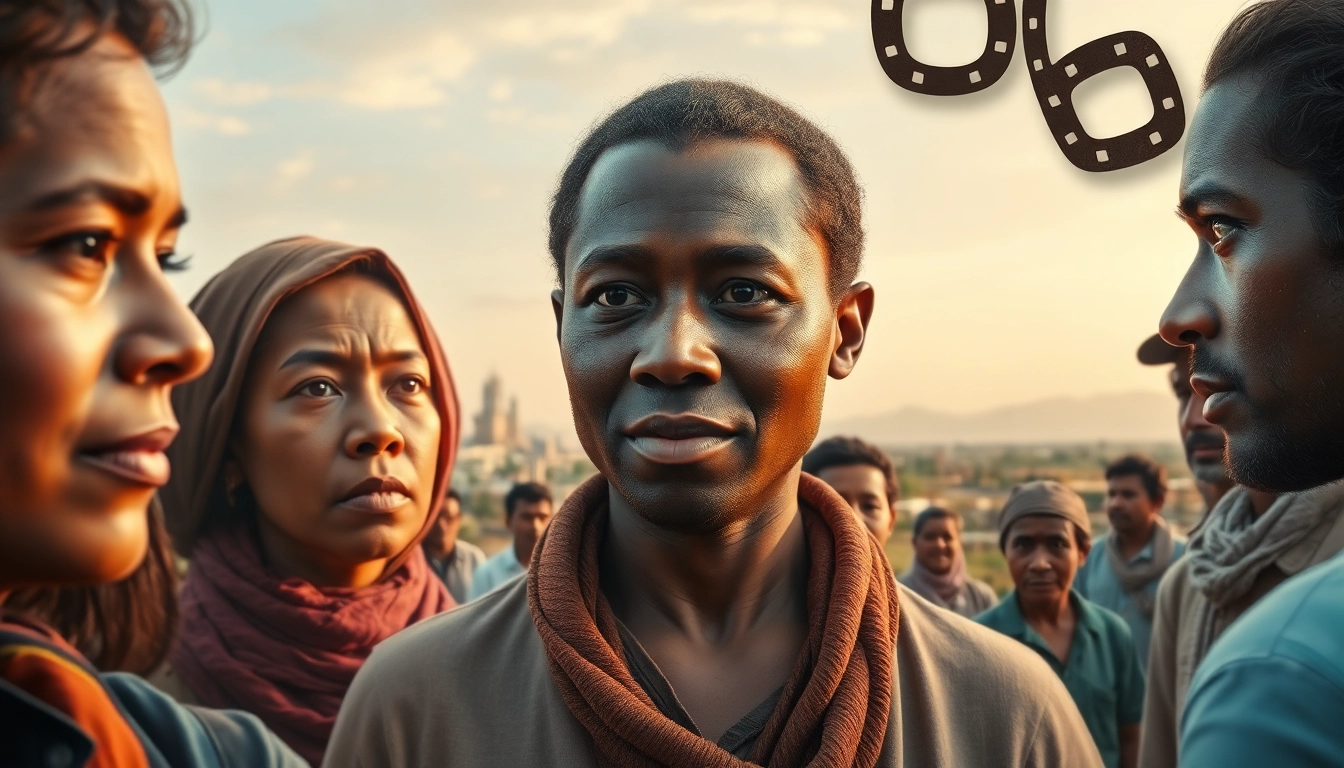Understanding Stories & Documentaries
The realm of Stories & Documentaries offers an intricate landscape where narrative and reality converge. Documentaries are not just visual narratives; they encapsulate the experiences, struggles, and triumphs of real individuals and societies. This section will delve into the defining characteristics of stories and documentaries, tracing their evolution in the cinematic world while examining their profound impact on audiences.
What Defines Stories & Documentaries
At its core, a documentary is a non-fiction film intended to document reality, primarily for the purposes of instruction or maintaining a historical record. Unlike fictional films that create stories from imaginative constructs, documentaries present facts, often involving real-life events, people, and interviews.
The defining elements of documentaries can typically be broken down into several categories:
- Facts and Real-Life Events: Documentaries revolve around truthful events normally presented in a chronological fashion.
- Interviews: Many documentaries thrive on interviews with experts, real-life subjects, or eyewitnesses to provide depth.
- Voiceover Narration: A narrator often guides the audience through the documentary, adding context and continuity.
- Archival Footage: This may include photographs, videos, and other historical records that support the narrative.
The Evolution of Documentaries in Cinema
The inception of documentary filmmaking dates back to the early 20th century. The first recognized documentary, “Nanook of the North” (1922), captured the life of an Arctic hunter, setting the bar for future filmmakers. Since then, the genre has evolved dramatically. Early documentaries were often rigidly formal, but newer styles incorporate narrative arcs, artistic cinematography, and immersive storytelling techniques, thus broadening the appeal of the genre.
The rise of digital technology and platforms has furthermore transformed how documentaries are produced, distributed, and consumed. Independent filmmakers can now reach global audiences through streaming services, enabling a diversity of stories that resonate with viewers worldwide.
Impact of Stories & Documentaries on Audiences
The impact of documentaries on audiences is profound. They serve not only as a source of education but also as a vehicle for social change. Documentaries have the unique ability to evoke empathy, challenge societal norms, and inspire action by revealing truths that might otherwise remain hidden.
For example, films like “Blackfish” sparked worldwide conversations about animal rights and led to significant changes in practices within marine parks. By fostering a deeper understanding of pertinent issues through factual storytelling, documentaries play a pivotal role in affecting public perceptions and behaviors.
Key Elements of Compelling Documentaries
Creating an engaging documentary requires careful consideration of several fundamental elements. These components contribute to a documentary’s effectiveness in communicating its message and captivating its audience.
Narrative Structure and Storytelling Techniques
Narrative structure is vital in documentaries as it provides a framework for storytelling. Common structures in documentaries include:
- Linear Narratives: Presenting information in a straightforward, chronological fashion.
- Non-linear Narratives: Employing flashbacks or varying timelines to create intrigue.
- Essayistic Styles: Combining various topics and viewpoints to explore a larger theme.
Moreover, employing storytelling techniques such as cliffhangers, foreshadowing, and character development can significantly enhance viewer engagement. These techniques make real stories relatable by incorporating emotional stakes that resonate with audiences.
Visual and Audio Design in Stories & Documentaries
The visual and auditory components of documentaries reinforce the narrative and establish immersive experiences. Cinematography is paramount; effective camera work captures the tone and emotion of the subject matter. Using controlled lighting, angle choices, and composition can significantly impact how stories are perceived.
Sound design, including soundtracks, ambient noise, and spoken narrative, influences how viewers relate to the material. Well-placed sound elements evoke emotions, directing audience responses and enhancing the overall atmosphere of the documentary.
Emotional Engagement through Authenticity
Documentaries thrive on authenticity. Audiences gravitate towards stories that feel genuine and relatable. Techniques to enhance emotional engagement include:
- Real-Life Testimonials: First-hand accounts from individuals involved in the narrative reinforce authenticity.
- Raw Footage: Unedited, real moments help create a visceral connection with the audience.
- Personalized Storytelling: Framing narratives around singular experiences or personal journeys makes broad topics accessible and engaging.
Exploring Various Genres of Documentaries
The documentary genre is incredibly diverse, encompassing various styles and themes. Each genre informs storytelling methods, content approaches, and the overall message conveyed to audiences.
Biographical Documentaries: Personal Journeys
Biographical documentaries focus on the life and experiences of an individual. They can illuminate the accomplishments, challenges, and societal impacts of their subjects. Notable films like “Amy” explore the life of Amy Winehouse, captivating audiences through poignant storytelling that highlights personal struggles and triumphs. Such documentaries allow viewers to form a connection with public figures by presenting them as complete individuals rather than just public personas.
Nature and Environmental Stories & Documentaries
Nature documentaries aim to educate viewers about wildlife, ecosystems, and environmental issues. Programs like “Planet Earth” and “Our Planet” provide stunning visual narratives that not only mesmerize but also raise awareness about conservation and the effects of climate change. Engaging storytelling combined with breathtaking imagery can incite interest and motivate viewers to advocate for environmental preservation.
Social and Cultural Documentaries: Capturing Reality
Social and cultural documentaries address themes related to society, culture, and human experience. These films explore issues like racism, inequality, and social justice, challenging viewers to reflect upon their perspectives and the state of the world. Movies such as “13th,” which critiques systemic racism and the prison industrial complex in the United States, use facts and historical context to educate while promoting dialogue and action.
Creating Your Own Stories & Documentaries
For aspiring filmmakers and storytellers, creating compelling documentaries can be a rewarding yet complex endeavor. Here’s a roadmap to guide you through the process of transforming your ideas into impactful documentaries.
Researching and Preparing Your Documentary Concept
The foundation of any successful documentary begins with thorough research. Identifying a compelling subject and gathering background information is crucial. Develop a clear concept that outlines your objectives, target audience, and the specific message you aim to convey.
Diving deep into existing literature, interviews, and related documentaries will enrich your understanding of the topic and help you identify gaps in current narratives, creating a unique angle for your story.
Filming Techniques for Effective Storytelling
When it comes to filming, effective techniques can significantly improve the quality of your documentary. Here are some essential tips:
- Plan Your Shots: Storyboarding can help visualize the flow of the documentary, ensuring you capture necessary scenes.
- Utilize Variety: Mixing up shot types—including wide shots for context and close-ups for emotion—can enrich your storytelling.
- Natural Interaction: Capture genuine reactions by allowing situations to unfold naturally. Candid moments often resonate more with audiences.
Editing and Post-production Essentials
Editing is where the magic happens; it’s your opportunity to weave together the narrative strands into a coherent story. Key aspects include:
- Creating a Cohesive Narrative: Organize the footage to create a clear and engaging story arc.
- Incorporating B-Roll: Supplement your main footage with additional visuals to enhance storytelling and context.
- Sound Design: Pay attention to sound, ensuring that dialogue, ambient sounds, and music are balanced and conducive to the emotional tone of the documentary.
Future Trends in the World of Documentaries
As the landscape of media evolves, so too does documentary filmmaking. The coming years are likely to witness transformative changes in the ways documentaries are produced and distributed.
Innovations in Documentary Filmmaking
Technological advancements in filming equipment, such as drones and high-resolution cameras, allow filmmakers to capture breathtaking visuals with unprecedented ease. Furthermore, VR technology is beginning to influence documentaries by providing immersive experiences that allow viewers to engage more deeply with the material and explore stories from a new perspective.
The Role of Digital Platforms in Story Dissemination
The rise of digital platforms has democratized documentary filmmaking. Filmmakers can now distribute their work worldwide without the need for traditional gatekeepers. This encourages more diverse stories and greater representation of different voices, allowing for a broader understanding of global issues.
Integrating Interactive Elements into Stories & Documentaries
The incorporation of interactive elements within documentaries can heighten engagement and enrich viewer experience. Interactive documentaries allow audiences to choose their paths through the story, providing a personalized viewing experience that can lead to deeper understanding and retention of information.



